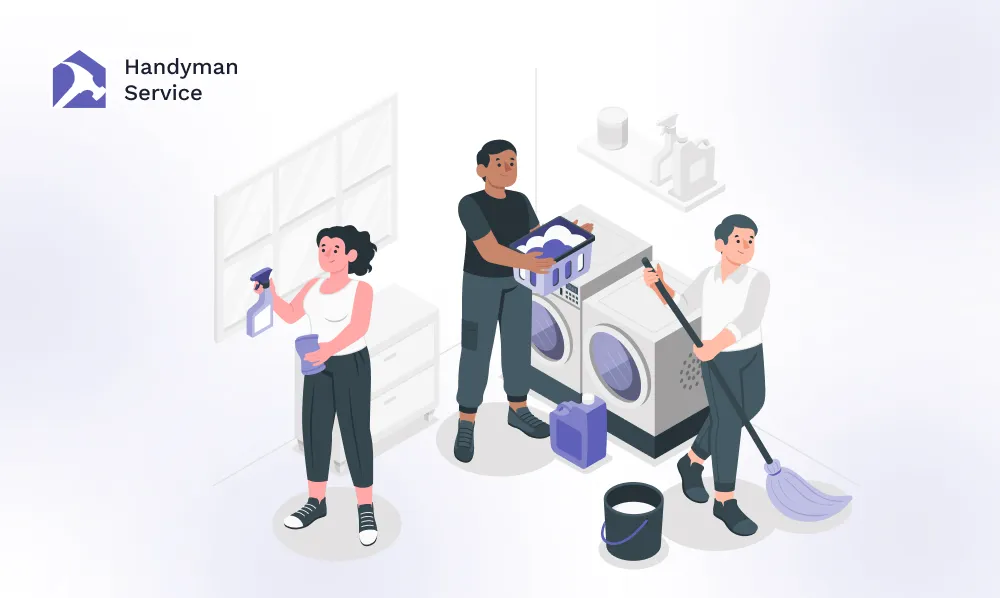
Overcoming Challenges in the On-Demand Home Services Industry
The on-demand home services industry has seen remarkable growth in recent years, driven by technological advancements and shifting consumer preferences. This sector, which includes plumbing, electrical work, and cleaning, allows customers to request and receive services quickly and efficiently through digital platforms. As on-demand home services industry continues to expand, addressing its challenges is essential for maintaining its success and ensuring high customer satisfaction.
Overcoming these challenges is crucial because they directly impact the services’ reliability, quality, and trustworthiness. Addressing issues like inconsistent service quality, managing customer expectations, and ensuring effective communication helps build trust and improve customer experiences. By focusing on these areas, on-demand home service providers can enhance their reputation and secure a strong foothold in a competitive market.
Common Challenges Faced by On-Demand Home Service Providers

On-demand home service providers encounter several challenges impacting their ability to deliver consistent, high-quality service. One of the primary issues is maintaining service quality and consistency across different providers. As the industry relies on a diverse network of service professionals, ensuring that each provider meets the same high standards can be difficult. Variations in skill levels, training, and personal standards can lead to inconsistent customer experiences.
Managing customer expectations presents another significant challenge. Customers often have high and diverse expectations regarding service quality, timeliness, and communication. Balancing these expectations while delivering reliable service can be complex, particularly when dealing with a broad customer base with varied needs and preferences.
Logistics and scheduling further complicate the delivery of on-demand home services. Coordinating appointments and ensuring services are delivered on time requires efficient scheduling systems and effective communication channels. Delays or errors in scheduling can lead to customer dissatisfaction and operational inefficiencies.
Key Point
1. Service Quality and Consistency:
Maintaining uniform high standards across different service providers is challenging but essential for customer satisfaction.
2. Managing Customer Expectations:
Meeting diverse and often high customer expectations requires careful planning and clear communication.
3. Logistics and Scheduling:
Coordinating appointments and managing service delivery efficiently is crucial for operational success and customer contentment.
Strategies for Ensuring Service Quality and Consistency
Maintaining high service quality and consistency is essential for the success of on-demand home service providers.One effective strategy is to standardize procedures. Companies can ensure that all service providers follow the same high standards by creating and enforcing clear, standardized procedures. This helps deliver a consistent customer experience, regardless of which provider is assigned to a job.
Another key strategy is to implement comprehensive provider training and certification programs. Training helps service providers understand the company’s expectations and procedures, while certification ensures they possess the necessary skills and knowledge. Regular training and certification updates help maintain service quality and adapt to new industry standards or technologies.
Quality control mechanisms also play a vital role in maintaining high service standards. Regular quality checks and feedback loops allow companies to monitor service performance and promptly address issues. Collecting customer feedback and conducting periodic evaluations help identify areas for improvement and ensure that service providers meet the expected standards consistently.
Key Point
1. Standardizing Procedures:
Creating and enforcing uniform procedures ensures that all providers deliver consistent, high-quality services.
2. Provider Training and Certification:
Thorough training and certification programs equip service providers with the necessary skills and knowledge to meet company standards.
3. Quality Control Mechanisms:
Enhancing Customer Experience and Managing Expectations
Clear communication is essential for enhancing the customer experience in on-demand home services. Clear and effective communication fosters trust and keeps customers well-informed about service details. From the initial inquiry to the completion of the service, keeping customers updated helps prevent misunderstandings and fosters a positive relationship.
Setting realistic expectations is another critical aspect of managing customer satisfaction. Companies should provide accurate information about service capabilities, timeframes, and costs. Clearly outlining what customers can expect helps avoid disappointments and ensures they have a realistic understanding of the service process. Maintaining customer trust and satisfaction relies heavily on this transparency.
Responsive and efficient customer support is crucial for handling inquiries and complaints effectively. A well-organized customer support system should be readily available to address concerns and resolve issues promptly. Quick and helpful responses to customer inquiries improve the overall experience and demonstrate the company’s commitment to customer satisfaction.
Key Point
1. Clear Communication:
Transparent and effective communication keeps consumers informed and reduces misunderstandings.
2. Setting Realistic Expectations:
Providing accurate information about service capabilities and costs helps manage customer expectations and avoid disappointments.
3. Customer Support Systems:
Responsive and efficient customer support addresses inquiries and complaints promptly, enhancing overall customer satisfaction.
Optimizing Logistics and Scheduling
Advanced scheduling tools are crucial in streamlining logistics and managing appointments efficiently. Technology and specialized software can significantly improve scheduling by automating appointment bookings, reminders, and rescheduling. These tools help avoid conflicts and ensure service providers promptly allocate to appointments.
Key Point
1. Advanced Scheduling Tools:
Technology and software streamline appointment management, reduce conflicts, and improve scheduling efficiency.
2. Efficient Dispatch Systems:
Improved dispatch systems coordinate provider assignments and track progress to enhance service delivery and reduce delays.
3. Resource Management:
Effective allocation of resources and managing provider availability ensures efficient service delivery and reduced wait times.
Conclusion
The on-demand home services industry faces several key challenges, including maintaining service quality and consistency, managing customer expectations, and optimizing logistics and scheduling. Implementing strategies such as standardizing procedures, providing thorough provider training, enhancing communication, and using advanced scheduling tools can address these challenges effectively.
Industry stakeholders are encouraged to adopt these strategies to improve service delivery and customer satisfaction. Proactive management and continuous improvement are essential for overcoming obstacles and achieving long-term success in the on-demand service sector.
Key Point
1. Recap of Key Challenges:
Service quality, customer expectations, and logistics.
2. Adopt Strategies:
Standardize procedures, train providers, enhance communication, and utilize scheduling tools.
3. Call to Action:
Embrace these strategies to improve service delivery and customer satisfaction.






